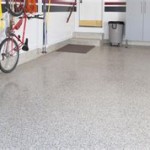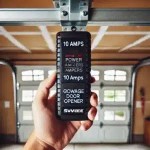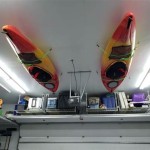How Much Do Garage Cabinets Cost?
Garage cabinets are increasingly popular storage solutions for homeowners seeking to optimize space and organization in their garages. They offer a structured method for storing tools, equipment, seasonal items, and other household goods, transforming a cluttered space into a functional and visually appealing area. However, the cost of garage cabinets can vary significantly depending on several factors, making it essential to understand these variables before making a purchase. This article will explore the range of costs associated with garage cabinets, examining the different types, materials, and installation considerations that influence the final price.
Understanding the components that contribute to the overall cost is paramount for budgeting and planning. This includes the type of cabinet material, the size and configuration of the cabinet system, whether you opt for pre-assembled or custom-built options, and whether you choose professional installation or a DIY approach. Each of these elements plays a crucial role in determining the final expenditure associated with upgrading your garage storage.
Factors Influencing the Cost of Garage Cabinets
Several key factors influence the price of garage cabinets. These factors can be broadly categorized into material, size and configuration, assembly and installation, and brand reputation.
Material: The materials used in the construction of garage cabinets significantly impact their cost. Common materials include metal (steel or aluminum), wood (particleboard, plywood, or solid wood), and plastic (polypropylene or PVC). Metal cabinets, particularly those made from heavy-gauge steel, are known for their durability and strength, making them suitable for storing heavy tools and equipment. They tend to be more expensive than cabinets made from other materials. Wood cabinets offer a more traditional aesthetic and can be a cost-effective option depending on the type of wood used. Particleboard cabinets are typically the most affordable but are also the least durable and can be susceptible to moisture damage. Plywood cabinets offer a better balance of cost and durability compared to particleboard. Plastic cabinets are lightweight, water-resistant, and relatively inexpensive, making them a good option for storing items that need protection from moisture. However, they may not be as strong as metal or wood cabinets.
Size and Configuration: The size and configuration of your garage cabinet system will also influence the overall cost. A larger system with more cabinets and drawers will naturally be more expensive than a smaller, simpler system. The configuration, including the number of cabinets, drawers, shelves, and specialty storage components like work surfaces or tool chests, also affects the price. Custom configurations designed to fit specific garage dimensions or storage needs will generally cost more than standard pre-fabricated systems.
Assembly and Installation: The method of assembly and installation also plays a crucial role in determining the final cost. Pre-assembled cabinets are generally more expensive than ready-to-assemble (RTA) cabinets, but they save time and effort during installation. RTA cabinets require assembly, which can be time-consuming and challenging, especially for those without prior experience. Professional installation can significantly increase the cost but ensures that the cabinets are properly installed and secured. DIY installation can save money on labor costs but requires careful planning, the right tools, and sufficient skills. It's crucial to consider the complexity of the installation and your own abilities before deciding whether to hire a professional.
Brand Reputation: The brand of garage cabinets you choose can also impact the cost. Established brands with a reputation for quality and durability often charge a premium for their products. While lesser-known brands may offer lower prices, it's important to research their reputation and read reviews to ensure that the cabinets are of acceptable quality. Investing in a reputable brand can provide peace of mind knowing that the cabinets are built to last and backed by a warranty.
Cost Breakdown by Cabinet Type and Material
To provide a more detailed understanding of garage cabinet costs, it's helpful to examine the price ranges associated with different cabinet types and materials.
Metal Garage Cabinets: Metal garage cabinets, particularly those made from steel, are known for their strength and durability. They are often powder-coated to resist rust and corrosion, making them ideal for the garage environment. The cost of metal garage cabinets can range from $300 to $1,500 per cabinet, depending on the size, gauge of the steel, and features. A complete metal garage cabinet system can cost anywhere from $2,000 to $10,000 or more, depending on the number of cabinets and the complexity of the configuration.
Wood Garage Cabinets: Wood garage cabinets provide a more traditional aesthetic and can be a cost-effective option. However, the durability and water resistance of wood cabinets can vary depending on the type of wood used. Particleboard cabinets are the least expensive, ranging from $100 to $500 per cabinet, but they are also the least durable and prone to moisture damage. Plywood cabinets offer a better balance of cost and durability, ranging from $200 to $800 per cabinet. Solid wood cabinets are the most expensive, ranging from $500 to $2,000 per cabinet, but they offer the best durability and aesthetic appeal. A complete wood garage cabinet system can cost anywhere from $1,000 to $8,000 or more, depending on the type of wood and the complexity of the configuration.
Plastic Garage Cabinets: Plastic garage cabinets are lightweight, water-resistant, and relatively inexpensive. They are a good option for storing items that need protection from moisture but may not be as strong as metal or wood cabinets. The cost of plastic garage cabinets can range from $50 to $300 per cabinet, depending on the size and features. A complete plastic garage cabinet system can cost anywhere from $500 to $3,000, depending on the number of cabinets and the complexity of the configuration.
Within each material category, there are further distinctions in price based on construction and features. For instance, a steel cabinet with locking mechanisms, adjustable shelves, and a powder-coated finish will typically cost more than a basic steel cabinet without these features. Similarly, a solid wood cabinet made from high-quality hardwood like oak or maple will cost more than a cabinet made from softwood like pine.
Installation Costs and Additional Expenses
In addition to the cost of the cabinets themselves, it's important to factor in installation costs and other potential expenses. Professional installation can significantly increase the overall cost, but it ensures that the cabinets are properly installed and secured. DIY installation can save money on labor costs but requires careful planning, the right tools, and sufficient skills.
Professional Installation Costs: Professional installation costs can vary depending on the complexity of the installation, the number of cabinets, and the location. On average, professional installation can cost between $50 to $150 per cabinet. This includes the cost of labor, transportation, and any necessary hardware or materials. For a complete garage cabinet system, professional installation can add several hundred to several thousand dollars to the overall cost.
DIY Installation Costs: DIY installation can save money on labor costs, but it requires careful planning, the right tools, and sufficient skills. You'll need to factor in the cost of tools, hardware, and any additional materials needed for installation. This can include items like drills, screwdrivers, levels, measuring tapes, and fasteners. The cost of these items can range from $50 to $500 or more, depending on the tools you already own and the complexity of the installation. Furthermore, consider the time investment required for DIY installation. If your time is valuable, the savings in labor costs might not outweigh the time spent on the project.
Additional Expenses: In addition to the cost of the cabinets and installation, there may be other expenses to consider. This can include the cost of preparing the garage floor, such as leveling or sealing the concrete. It may also include the cost of electrical work if you plan to install lighting or outlets inside the cabinets. Finally, consider the cost of disposal if you are removing old cabinets or shelving. These additional expenses can add several hundred dollars to the overall cost of the project.
When comparing quotes from different installers, be sure to ask for a detailed breakdown of the costs, including labor, materials, and any additional fees. It's also a good idea to check the installer's credentials and read reviews to ensure they have a good reputation and provide quality workmanship. Before embarking on a DIY installation, research the specific requirements for your cabinets and consult with a professional if you have any questions or concerns.
Ultimately, the cost of garage cabinets is a multifaceted consideration. By carefully evaluating the factors discussed – material, size, installation method, and potential added expenses – homeowners can make informed decisions that align with their specific needs, budget, and storage goals. Planning and research are key to achieving a functional, organized, and aesthetically pleasing garage space without overspending.

How Much Do Garage Cabinets Cost The Experience

How Much Do Garage Cabinets Cost

How Much Do Garage Cabinets Cost

Cost To Install Garage Storage The Home Depot

Garage Cabinets And Storage System Costs 2024 Data Angi

Ultimate Garage Cabinets Cost Guide How To Plan And Budget

How Much Do Custom Garage Cabinets Cost

Garage Cabinets And Storage System Costs 2024 Data Angi

Cost To Install Garage Storage The Home Depot

Garage Storage Cabinets Design And Install Closet Factory
Related Posts








